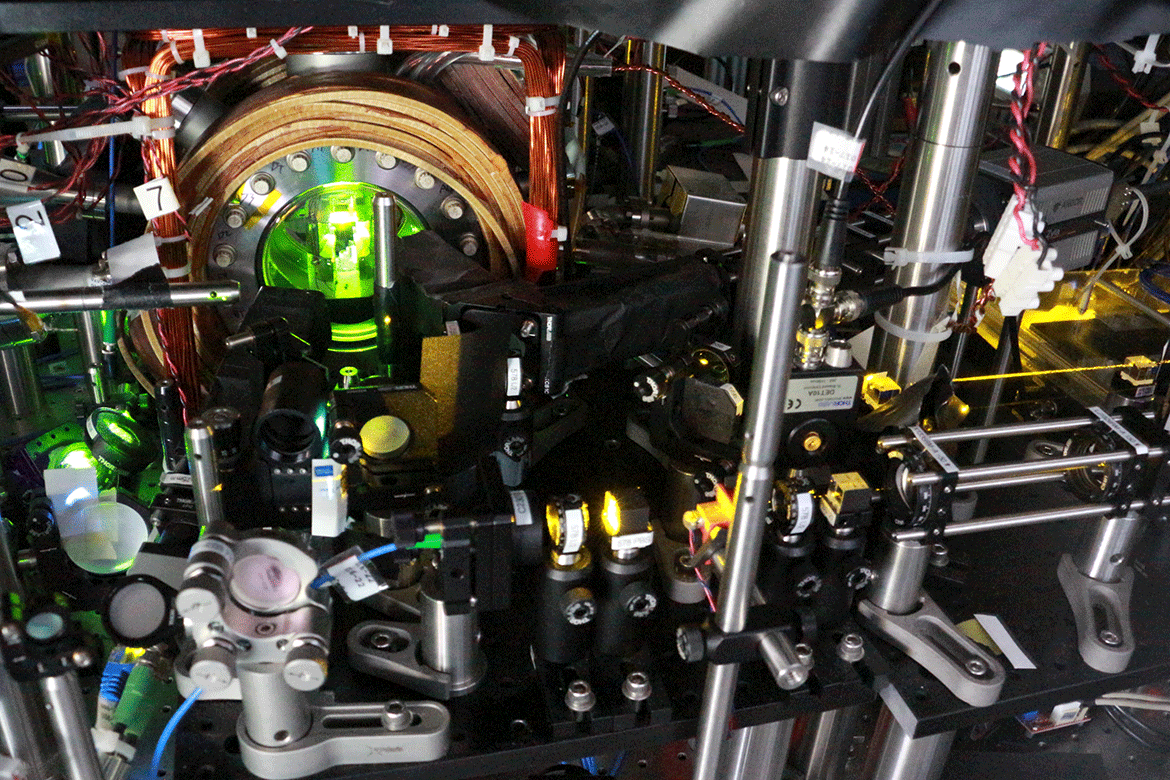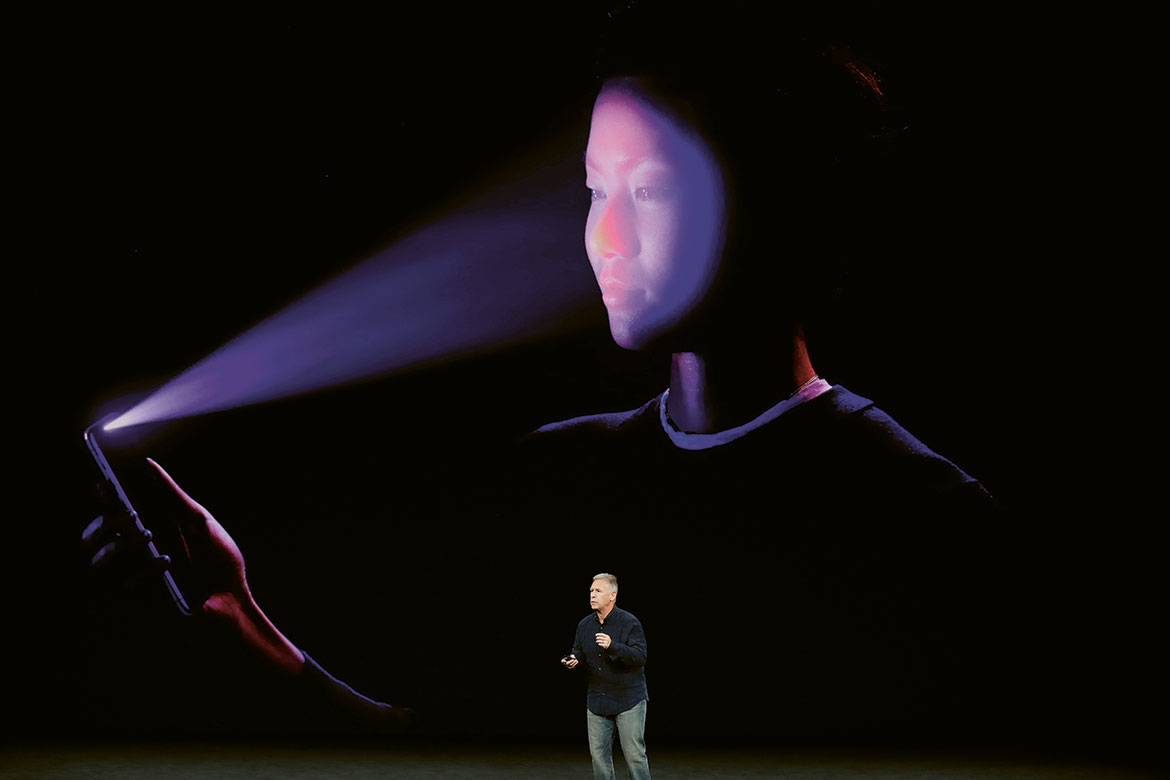How quantum physics is revolutionising the measurement of time
Future atomic clocks will only lose one second every 15 trillion years. This high level of precision is based on entanglement, a puzzling quantum phenomenon.

Several hundred atoms are crammed into the glowing green chamber shown here. They are entangled with each other so that the researchers can measure their vibrations more precisely. | Image: Simone Colombo
Quantum entanglement defies common sense. When two particles are ‘entangled’, they simultaneously match each other’s quantum state, regardless of the distance between them. This instantaneously updated relationship seems unperturbed by the ceiling that is the speed of light: Even if two entangled atoms are located at opposite ends of a galaxy, they react at exactly the same time. This disconcerting phenomenon may also improve our measurement of time: Simone Colombo, a Swiss postdoc at the Massachusetts Institute of Technology MIT, is currently using it to construct the world’s most precise atomic clock.
In 1967, during the 13th General Conference on Weights and Measures in Paris, the atomic clock rose to the lofty heights of ‘official means of measurement’. For the first time, the second was no longer defined as a fraction of the year, but as a property of matter.
Since then, the official second has been equivalent to 9,192,631,770 oscillations of a caesium atom – an electron in the atom changing from an ‘up’ to a ‘down’ energy level and back again. This approach is infinitely more precise than astronomical measurements.
It was not until the 2000s that atomic clocks saw any significant advances. The new models use elements, e.g., strontium or ytterbium, which oscillate 500 trillion times per second, i.e., 50,000 times faster than caesium. As they allow the second to be divided into smaller fractions, they are much more precise. Their oscillation frequency is close to that of visible light, and can therefore be measured with a laser. That is why these instruments are called ‘optical clocks’.
Uncertainty virtually eliminated
Atomic clocks only measure an average. At the heart of the device, the several dozen or hundred atoms work like so many small independent clocks that oscillate out of phase. “It’s like flipping a coin a few hundred times a second”, says Colombo. “With so many flips, the average will be almost 50 percent up and down. But because it’s still an average, there will always be uncertainty”.
This is where quantum entanglement comes in. In the atomic clock designed by Colombo and his team, the ytterbium atoms are artificially entangled, using a complex procedure called ‘spin squeezing’. They therefore oscillate in phase, like hundreds of synchronised ticking clocks. The entanglement is not yet perfect, but the uncertainty is practically eliminated.
This process provides an impressive gain in accuracy. The standard caesium clock drifts by about one second every 150 million years; optical clocks drift by one second every 15 billion years, slightly more than the age of the Universe. The quantum entanglement optical clock, on the other hand, could achieve an accuracy of one second of drift every 15 trillion years! For the time being, Colombo and his team has achieved one second of drift every 150 billion years.
Beyond the measurement of time
These gains in precision may seem trivial, but they open up many possibilities. In astrophysics, an entangled clock would make it much easier to detect gravitational waves, and therefore to detect more phenomena in our Universe; satellite geolocation, i.e., GPS, could achieve precision in the centimetre or even millimetre range; entangled clocks could even make it possible to map the bowels of our planet by measuring minute local variations in the flow of time, and from there the gravity specific to the composition of the subsoil, by applying the inexorable theory of relativity.
Quantum entanglement is, however, still fragile and technically complex in practice, says Jun Ye, a physicist and optical clock expert at the National Institute of Standards and Technology, the custodian of units of measurement in the US.
According to Ye, who was not involved in Colombo’s project, his work demonstrates the feasibility of the approach in principle: “Our group is actively keeping abreast of these developments, and we are in the process of incorporating entanglement into a next-generation optical clock”.
From the first atomic clock and caesium in 1949, through optical clocks and quantum entanglement, the measurement of time continues to progress. As early as 2030, the International Bureau of Weights and Measures (or BIPM) may abandon caesium and adopt an optical clock as the new official reference for the second – ytterbium, strontium, mercury and aluminium are vying for the honour. Unless entangled clocks are developed quickly enough to steal the show.




